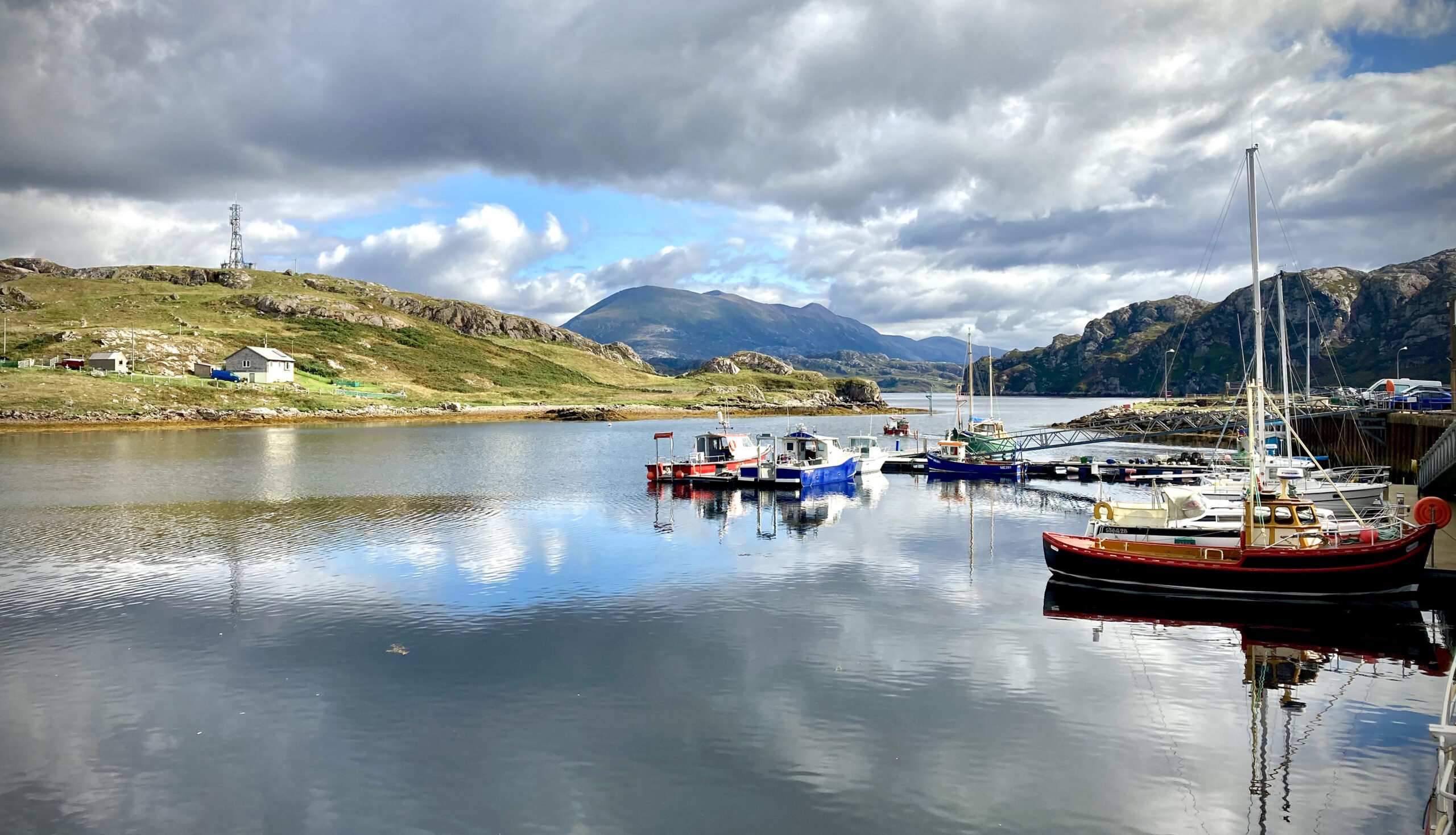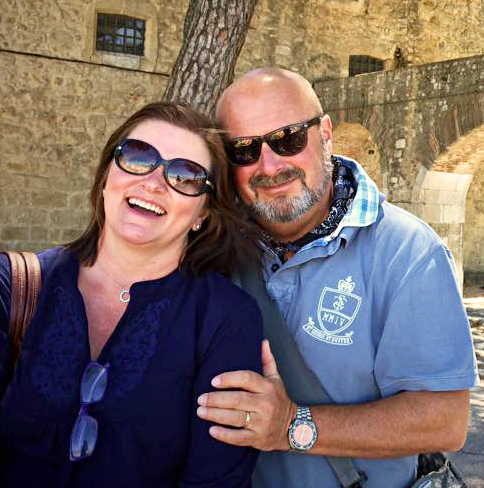NC500 Route: Unleashing the Beauty of the Scottish Highlands
Unleash your wanderlust and witness the unrivalled beauty of the Scottish Highlands on the legendary NC500 Route.
An Introduction to the NC500 Route
Are you ready for an unforgettable road trip through the undeniably stunning landscapes of Scotland?
The NC500 Route is a legendary 516-mile scenic road trip that takes you through the stunning landscapes of the Scottish Highlands. The NC500 Route offers a mesmerizing experience, showcasing the country’s natural beauty, historic landmarks, and picturesque villages.
Introduced as ‘Scotlands Route 66’ in 2015, in an initiative in the North Highlands. In 2019 it was thought to generate £22 million in additional revenue annually.
It’s a voyage through geological formations and weather forces, winding roads and sometimes tricky driving conditions. There are wonderfully hospitable people, and the odd grumpy highland cow in the middle of the road. Fabulous castles and fantastic beaches. Wonderful bridges and glorious lochs. Wonderful sunsets and Whisky. Did I mention the Whisky?
So, if you are happy to keep one eye on the scenery and one eye firmly fixed on the road then ‘Welcome to the NC500’
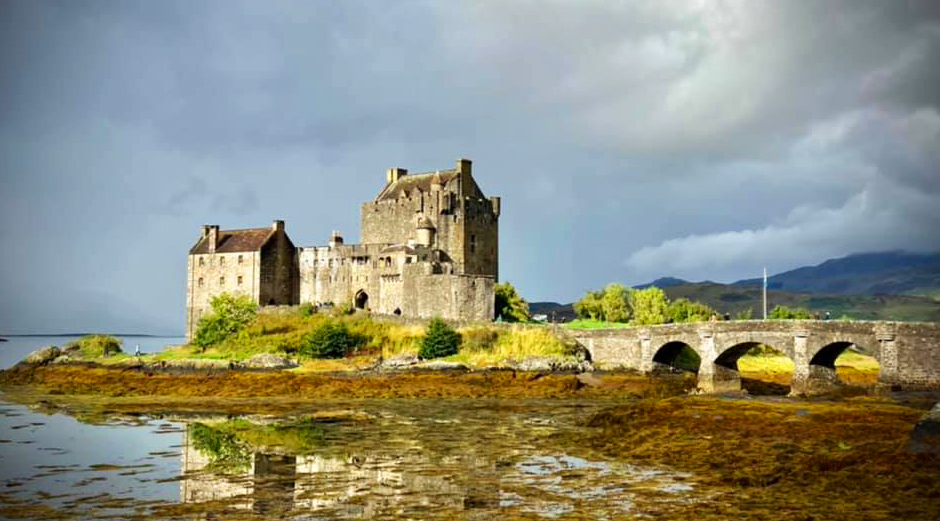
While the route can be travelled in either direction, embarking on the journey anticlockwise offers a unique and exhilarating experience. This article explores what was going to be the NC500 anticlockwise adventure, uncovering breathtaking landscapes and cultural gems along the way.
Expect to see rugged coastlines, pristine beaches, picturesque villages, and majestic castles on your NC500 road trip.
This website is supported by our readers, so if you buy through links on this site we may earn a small commission at no extra cost to you.
North Coast 500 – Clockwise or Anticlockwise?
When it comes to deciding which direction to take on the North Coast 500, there are several factors to consider.
People initially consider the clockwise option first. However, there are important aspects to contemplate when making this decision.
Driver Confidence.
If you are not entirely comfortable behind the wheel or are driving an unfamiliar vehicle, tackling the challenging Bealach na Ba pass to Applecross on the first day (The clockwise option) might not be the best choice. It is a tricky drive with a steep incline, combined with hairpin bends on a very narrow road! It is particularly difficult in bad weather, and I have personally witnessed a local lorry driver come head to head with a hired motorhome on a single-track road where the motorhome was expected to reverse and the driver just couldn’t!
Weather Conditions on the NC500 Route
The weather also plays a significant role. If you haven’t pre-booked accommodation and are open to wild camping, you have the advantage of checking the weather forecast and deciding which direction seems more favourable. We decided that for us that the weather was going to be a little rough. Hence we decided to drive anticlockwise, saving the more dramatic West for the better weather. We couldn’t have been more right about the weather for the East Coast section of our trip. In fact it turned out to be one of the contributing factors to us wondering off the official route so often.
Don’t Forget the View!
Consideration should also be given to passenger views. It is often suggested that travelling clockwise allows the passenger, who sits on the left side in a right-hand drive vehicle, to enjoy the coastal views.
So it’s Anticlockwise for us!
Personally, we recommend going anti-clockwise. For us, once the decision was made due to weather, the journey and the overall experience gradually build up to a climax as you head from east to west. The East is pretty and has its own merits, but as you gradually head West the landscape gets more rugged and dramatic, and finally just Breathtaking!
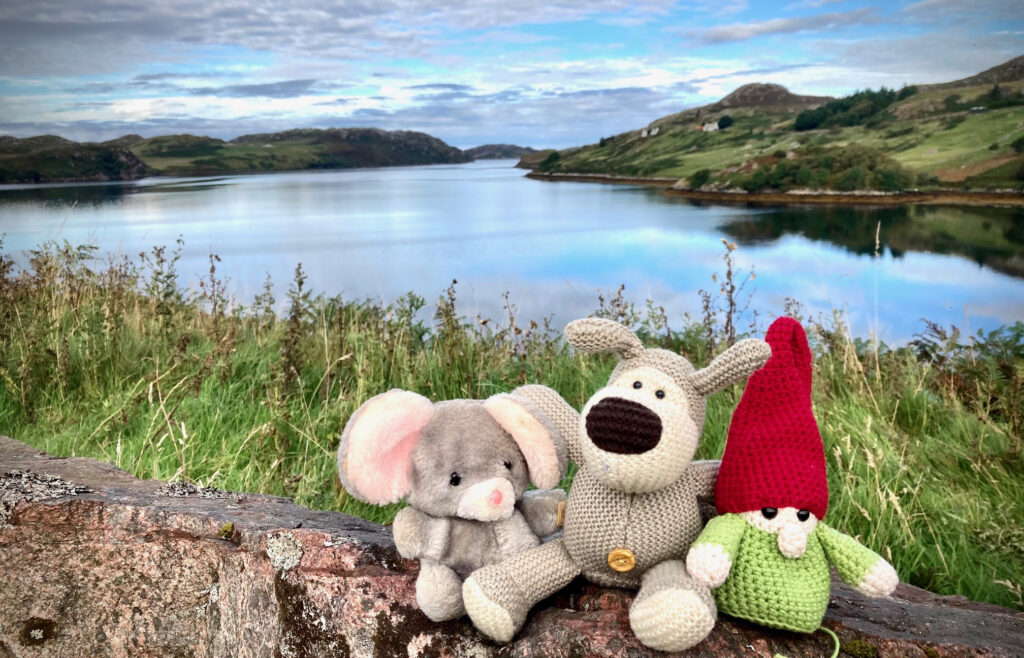
Planning Your Journey on the North Coast 500 Route
To make the most of your NC500 anticlockwise trip, careful planning is essential. Consider the seasonal variations and choose the best time to embark on the adventure. The route is particularly popular during the summer months, but also offers its own charm during spring and autumn. Determine the recommended duration for the trip based on your interests and desired pace. Create a detailed itinerary, allowing for exploration and relaxation at each stop. Before hitting the road, ensure your vehicle is in good condition. Have thorough checks on brakes etc. and pack essentials such as maps, snacks, and emergency supplies.
No amount of planning however could prevent the accident which caused Mel to suffer a broken foot just weeks before we were due to leave. This saw our trip turn from a ‘we are going to go and climb a mountain!’ to ‘we are going to drive and do a road trip’. This change in priorities fundamentally changed the route for us, and this is an account of how things turned out.
North Coast 500: Britain’s ultimate road trip official guide
100 of the best places to stop on the NC500 route including;
- Beaches and bays; Sandwood Bay to Red Point Beach
- Historic sites; Culloden battlefield to Dunrobin Castle
- Off the beaten track; Cape Wrath to Traligill Caves
- Urban areas: Ullapool to John o’ Groats
- Wildlife and nature: Dunnet Head to Suilven
A book to help plan your trip around the dramatic North Scotland. An indication of how long to spend at each place is given along with a full description and photograph.
Into Scotland: Heading for the NC500 Route
As we drove up from England, our first night we crossed the border into Scotland and headed for St. Abbs. The signs welcoming you to St Abbs may have you scratching your head. The Twinning with ‘New Asgard’, a bit of a joke following the filming of scenes from Avengers: Endgame at this location
The water around here is crystal clear which makes it a magnet for scuba divers. It was also Britain’s first voluntary marine reserve the details of which are to be found in the pretty visitors centre, which used to be the village hall.
For us, fishing off the harbour wall was as energetic as we got. Mass excitement occurred when a pod of dolphins was spotted out past the harbour wall, and the early evening was spent hoping they would come back again
A massive fundraising effort was launched following the RNLIs decision to remove the lifeboat at St Abbs. The now privately funded and independent Lifeboat station was reopened with a new boat in 2016.
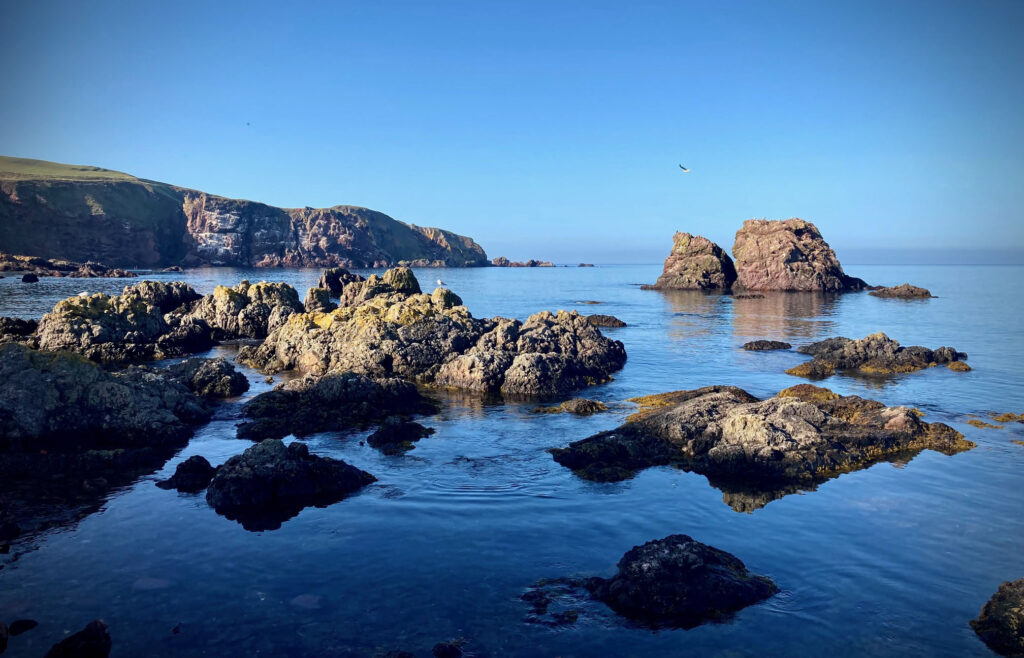
There are motorhome spaces along the harbour wall, for a small, cash fee. We parked up at the harbour wall, popped our £10 through the Harbour Masters letterbox, settled down for the evening with a bottle of wine, and cooked a little dinner as the light dropped. We wanted to see the sunrise on our first day in Scotland, and the following morning we were not disappointed as the sun rose. The view over the bay was spectacular.
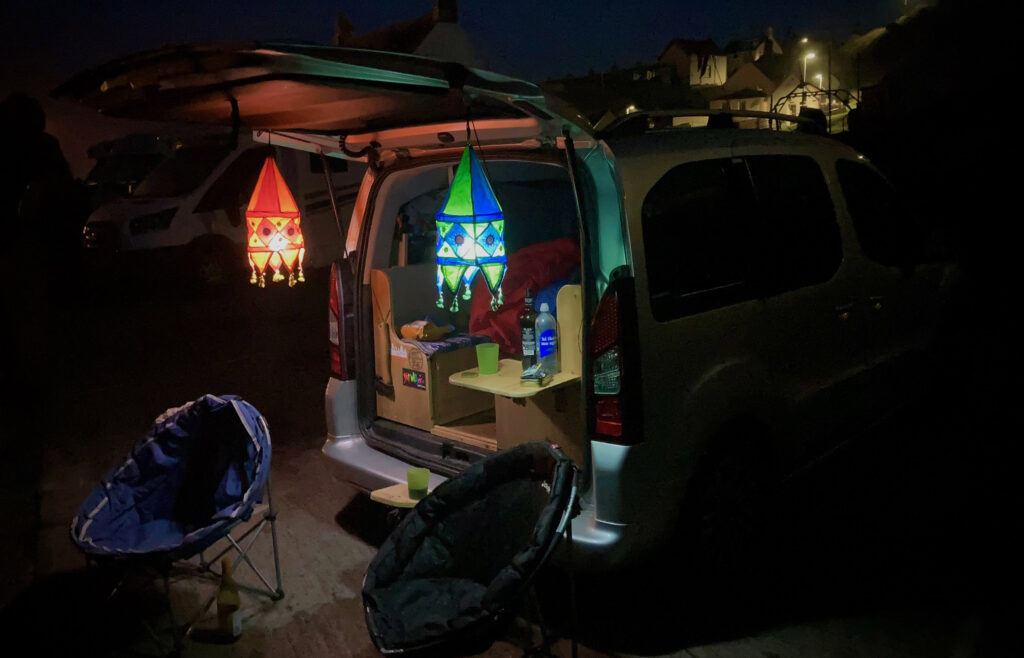

On to Inverness: The Old Military Road
We left early and continued North, around Edinburgh, over the Forth Bridge, and continued on the M90 to Perth. At this point, we made the decision not to take the, apparently, rather boring A9 around the Cairngorms National Park, as it had been recommended that instead, we drive The Old Military Road, A93.
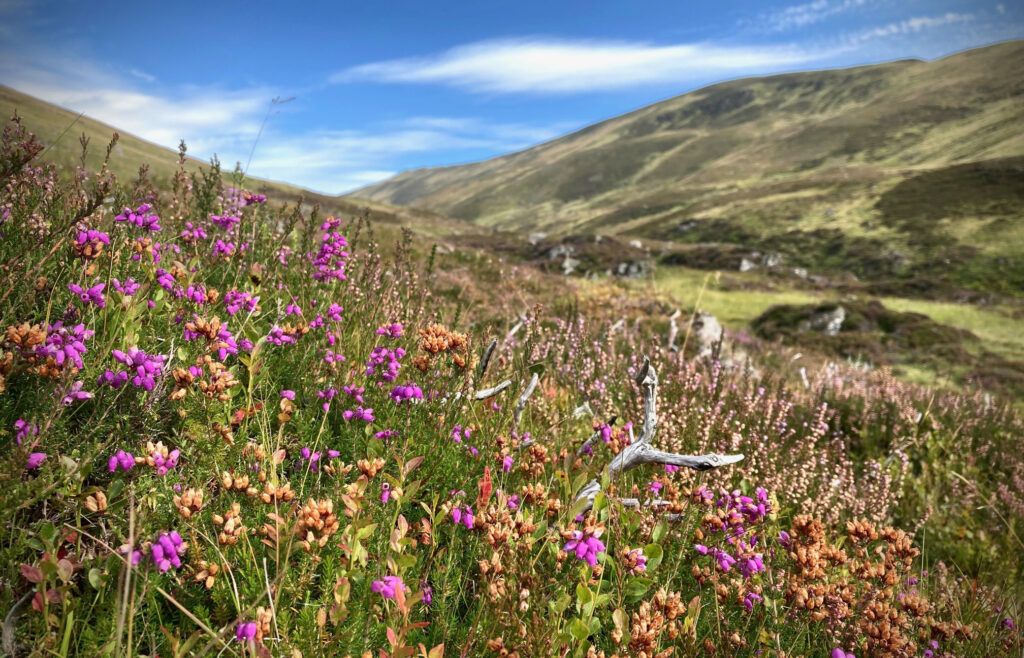
The Road takes you through the heart of the Cairngorms National Park. It takes you through the kind of sceneries you would expect to see on your drive through Scotland. The road is pretty quiet and barely has any traffic at all. Most people drive around on the main road that runs next to the national park, as it’s much quicker, but honestly, you will be so glad you took The Old Military Road!
The Old Military Road is literally in the middle of nowhere! The endless mountain views, Stunning vistas, and absolute remoteness are truly worth a few hours of your time.
At Balmoral Castle, we turn left onto the B976, heading north again, and at the fork in the road turn left onto the A939 (Still the Old Military Road). Follow all the way out to the A95 at Speybridge. At Speybridge you can pick up the Old Military Road again and it will take you all the way to Inverness, about 1 hours drive.
We, however, didn’t head for Inverness, we started by heading down the south side of Loch Ness. Hoping to see beautiful vistas we were disappointed as the route is heavily wooded and these sorts of views were hard to find.
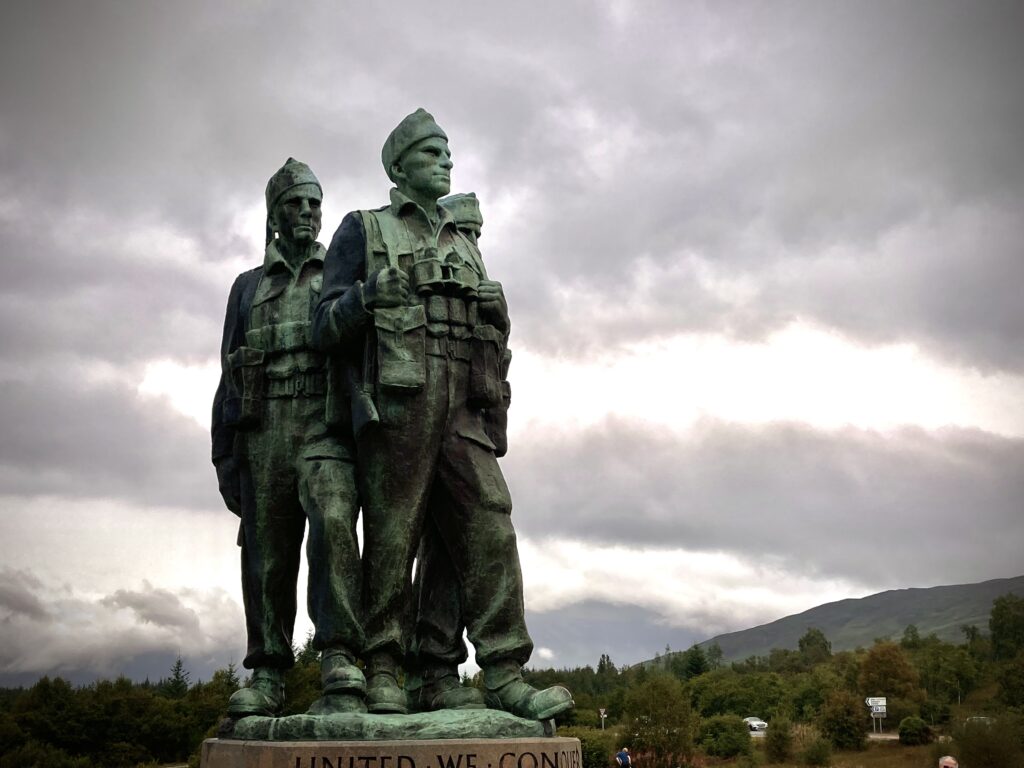
Take a moment to visit the Commando Memorial a Category A listed monument in Lochaber, Scotland. It’s dedicated to the men of the original British Commando Forces raised during World War II and situated around a mile from Spean Bridge. It overlooks the training areas of the Commando Training Depot established in 1942 at Achnacarry Castle.
Fort Augustus
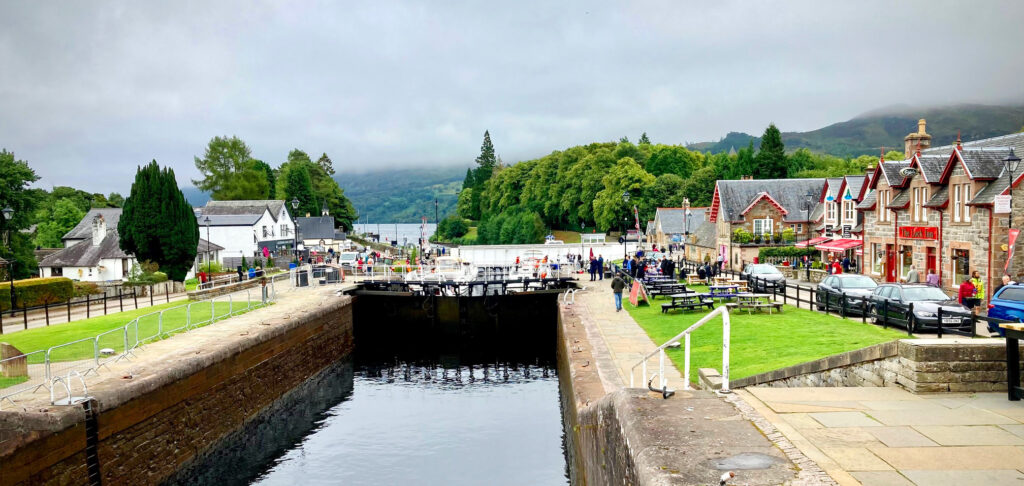
The B862 eventually delivered us to the delight which is Fort Augustus Here there is a ladder of Locks joining Loch Ness to the Caledonian Canal. You can easily spend an hour watching the boats negotiating these and the swing bridge. There is a nice choice of gift shops, pubs and ice cream vendors in the centre of the town and plenty of accommodation in the area.
Toward Inverness

The view is spectacular at Castle Uquhart, but for this, you must endure an entrance fee.
Drumnadrochit will appear on the route, this nonsensical place, which appears to have invested heavily in every aspect of Nessie-mania, is a tiny place with a tiny population but has gone to the expense of two Loch Ness Exhibition centres battling for your tourist pennies. We can’t comment on which is the better of the two, having always hated ‘tourist traps’ of this nature, we visited neither.
Inverness: Start of the NC500 Route
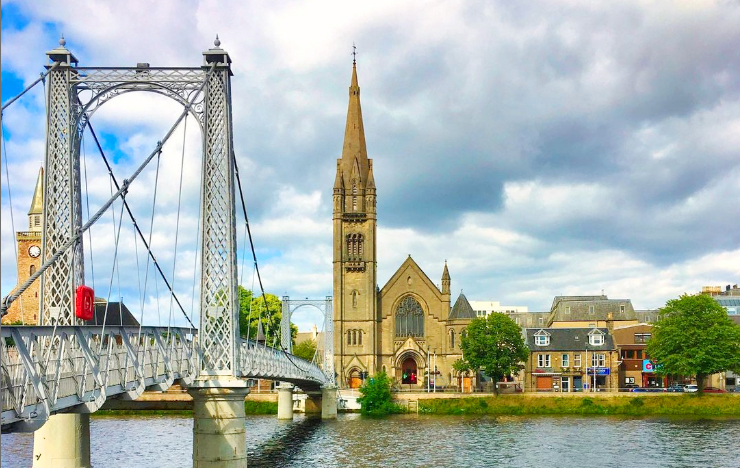
The historic city of Inverness serves as the starting point for the journey. Immerse yourself in the rich history and charm of this city, with its magnificent Inverness Castle standing tall.
Culloden Battlefield
Don’t miss the opportunity to visit the Culloden Battlefield, where the infamous Battle of Culloden took place. The last pitched battle ever fought on British soil it saw the defeat of Bonnie Prince Charlie in a little over an hour. There is a visitor centre and a self-guided audio tour in numerous languages included in the entrance fee.
Cawdor Castle
A traditional Scottish Castle built and inhabited by the Cawdor family for over 600 years. Stunning gardens/grounds and history will leave you pondering.
Cruising Loch Ness
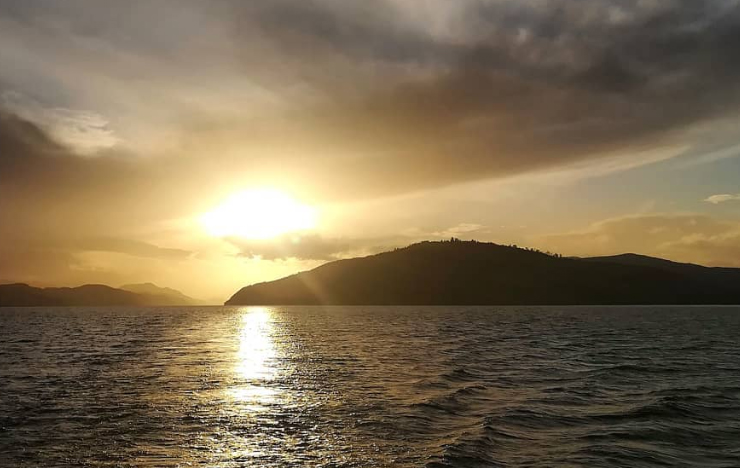
No trip to Inverness would be complete without embarking on a Loch Ness cruise. Hop aboard a boat and venture into the mysterious waters of Scotland’s most famous loch. As you sail along, keep your eyes peeled for a glimpse of the legendary Loch Ness Monster, affectionately known as Nessie. Enjoy the breathtaking scenery of the surrounding mountains and learn about the myths and legends that shroud this mystical loch.
Wandering the Inverness Botanic Gardens
For those seeking tranquillity and natural beauty, a visit to the Inverness Botanic Gardens is highly recommended. Explore the diverse range of themed gardens, including the Tropical House, the Cacti House, and the Floral Hall. Admire the exotic plant species, vibrant blooms, and serene water features as you take a leisurely stroll through these picturesque gardens.
Immersing in Culture at the Inverness Museum and Art Gallery
To delve deeper into the cultural heritage of Inverness, pay a visit to the Inverness Museum and Art Gallery. Explore the fascinating exhibits that showcase the history, art, and traditions of the Highlands. From archaeological artefacts to contemporary artworks, there is something to captivate every visitor. Gain a deeper understanding of the region’s past and present through this engaging cultural institution.
Shopping at the Victorian Market
The Victorian Market is a vibrant shopping destination where you can browse through a variety of shops and stalls, offering everything from local produce to unique crafts and souvenirs. Immerse yourself in the bustling atmosphere, interact with friendly vendors, and pick up some delightful treasures to commemorate your time in Inverness.
Indulging in Local Cuisine
No visit to Inverness is complete without savouring the local cuisine. From traditional Scottish dishes to international flavours, the city boasts an array of dining options to suit every palate. Sample hearty Scottish favourites like haggis, neeps, and tatties, or treat yourself to fresh seafood sourced from nearby lochs. Pair your meal with a fine whisky from one of the city’s many whiskey bars, and indulge in the flavours of the Highlands.
Inverness: A Conclusion
Inverness, with its rich history, stunning landscapes, and warm Highland hospitality, offers an unforgettable experience even in just one day. From exploring historic landmarks to immersing in nature, indulging in cultural offerings, and savouring local flavours, there are numerous things to do in Inverness that will leave you with cherished memories of your visit. So, make the most of your day in this enchanting city and create your own Highland adventure.
East Coast Beauty
Having rejoined the official NC500 route we were soon wandering off again. Heading right into the Black Isle at the first opportunity – on the hunt for more dolphins in the Moray Firth. It’s one of only three areas of the UK waters which has resident dolphins, but we were disappointed. Determined not to take a boat trip in the Moray Firth due to the stress this places on the wildlife we ended up sleeping for the night on the furthest peninsula opposite Cromarty near the Nigg Ferry Terminal.
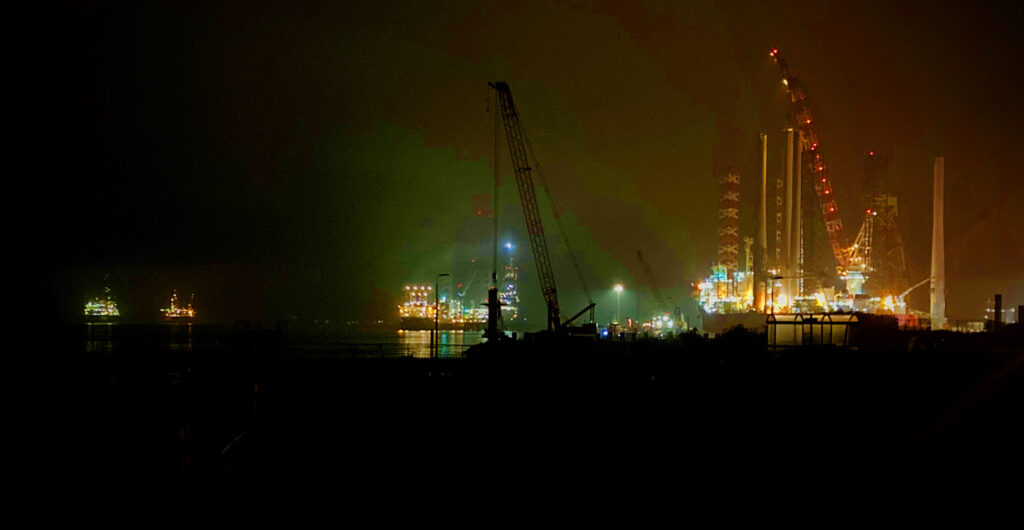
What we didn’t expect was the Port of Nigg, where they seem to construct parts of Oil Rigs. And if this wasn’t enough of a surprise, the following morning heading round the Cromarty Firth we were firstly amazed to find the ‘storing’ of oil rigs in the Firth, and then around the next corner, delighted to see seals in the water and at play on the rocks at Dornoch (take Binoculars!). It really was a tapestry of coastal wonders.
We picked up the A9 at the Bridge across the Firth and moved on.
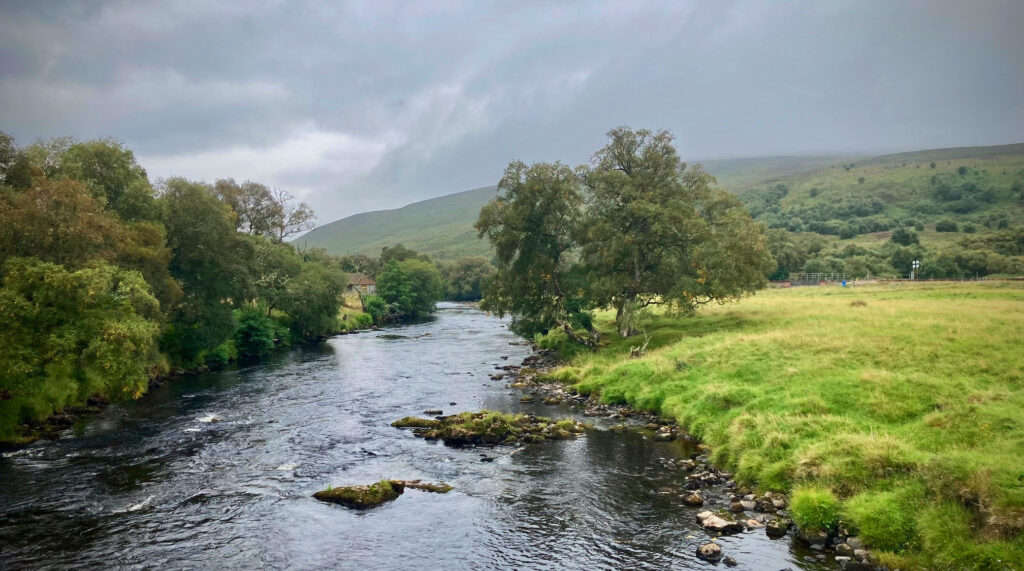
At Helmsdale we headed again inland and followed the Helmsdale River (famous for its fly fishing) via the A897 for some miles to Kildonan the site of a historic gold rush and where today you can still try your hand at gold panning (at Baile An Or).
Helmsdale itself is a large village very pretty but grey with its morbid Scottish stone buildings. There’s a nice port area in which we had planned to stay for the night but instead, we headed north.
We were by now getting a little fed up with the East Coast weather. The sun came out for a while as we had dressed crab from a kiosk in the very pretty harbour of Dunbeath.
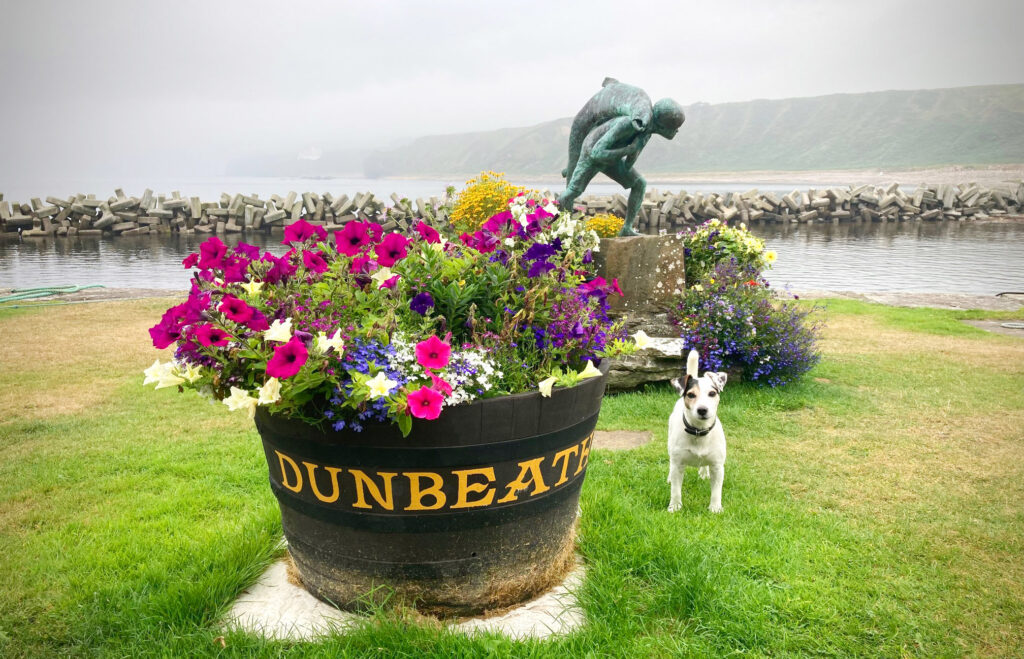
Bedecked with wonderful flower arrangements, it’s a beautiful location and the Dunbeath Heritage Centre tells the story of how the harbour boomed due to Herring. We thought we had found our overnight stop until the midges descended and we found ourselves back on the road again finally finding our overnight stop at a pub (The Village Inn) a short distance from John O’Groats in a place called Keiss.
The Wild North

Heading north, we entered the untamed landscapes of Caithness. In the morning we were up early to make the short final trip to John o’ Groats, the northernmost point of mainland Britain, and soak in the awe-inspiring views of the North Sea. Well, it may be more accurate to explain that we got soaked by the rain whilst looking out to the North Sea! We were lucky to take some dry pictures at the embarrassingly tacky tourist spot which bookends the north of the country.
It’s not quite the most northern point in Mainland Scotland though, Dunet Head takes that accolade.
Dunet Head
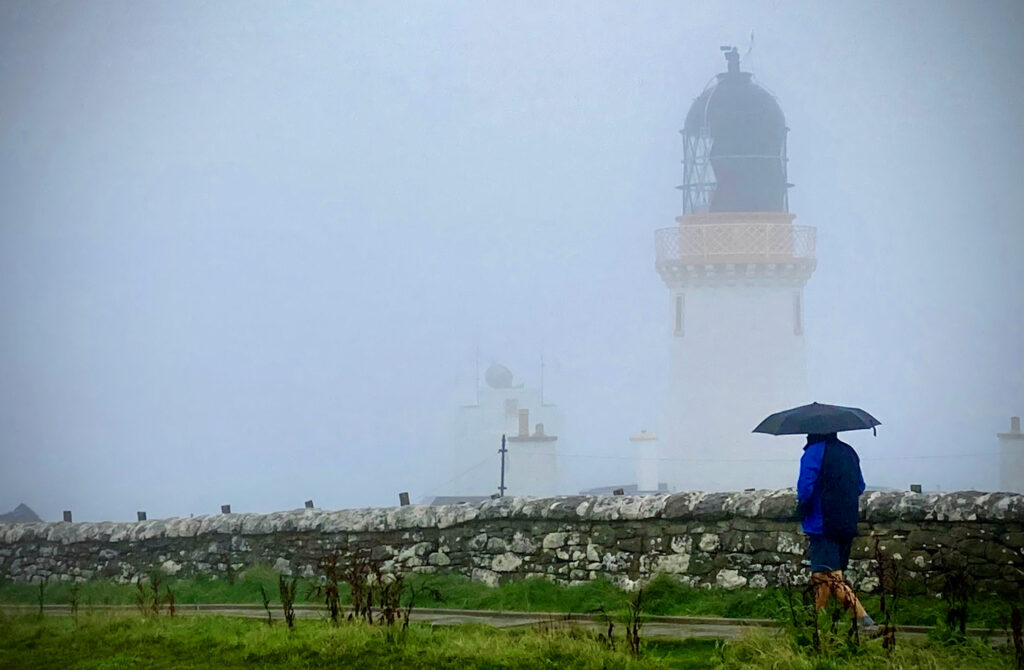
We had breakfast there, (scotch pancakes and jam) watching the water pour down the windows whilst parked in the car park of the lighthouse, which we couldn’t see for the rain and the sea fog.
Having looked at the weather forecast for the next few hours, we admitted defeat and drove to Thurso and booked ourselves into a Campsite for the day/night.
The following day the weather had improved and we decided to get off the NC500 again and headed down the B871 at Betty Hill. So now instead of heading West, we were heading south. When we arrived at Strathnaver we took the B873 still heading South. This route is not part of the NC500 however it is extraordinarily beautiful. Once we had pulled over for about 30 minutes to let a cycle race pass us we followed these roads west across some of the most spectacular scenery. At the end of the B873, we turned left onto the A836 and followed it till we came across Loch Shin, and turned right onto the A838.
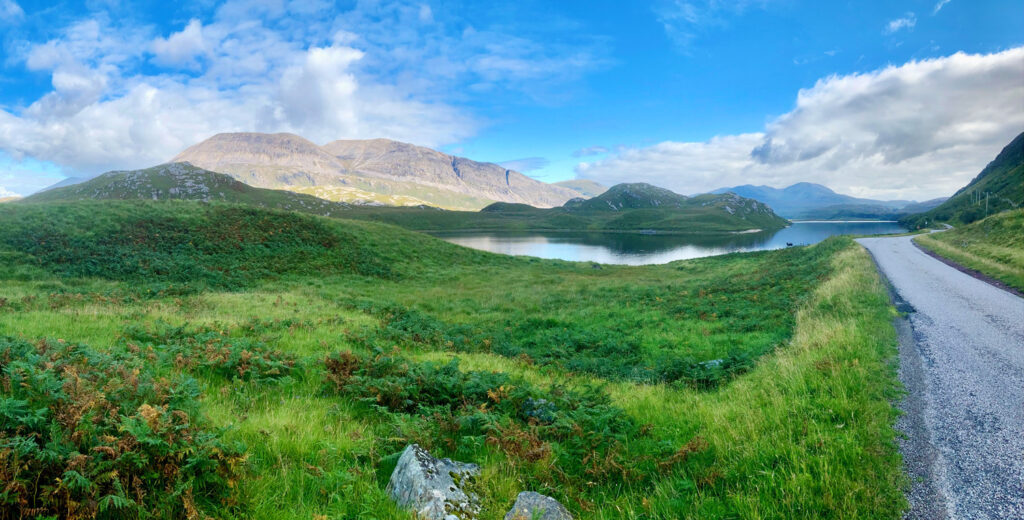
The views over Loch Shin were more of the sort of views we had expected at Loch Ness, and by the time we popped on the West Coast at Laxford Bridge, we had missed a huge amount of the NC500 but had seen instead some of the most breathtaking scenery
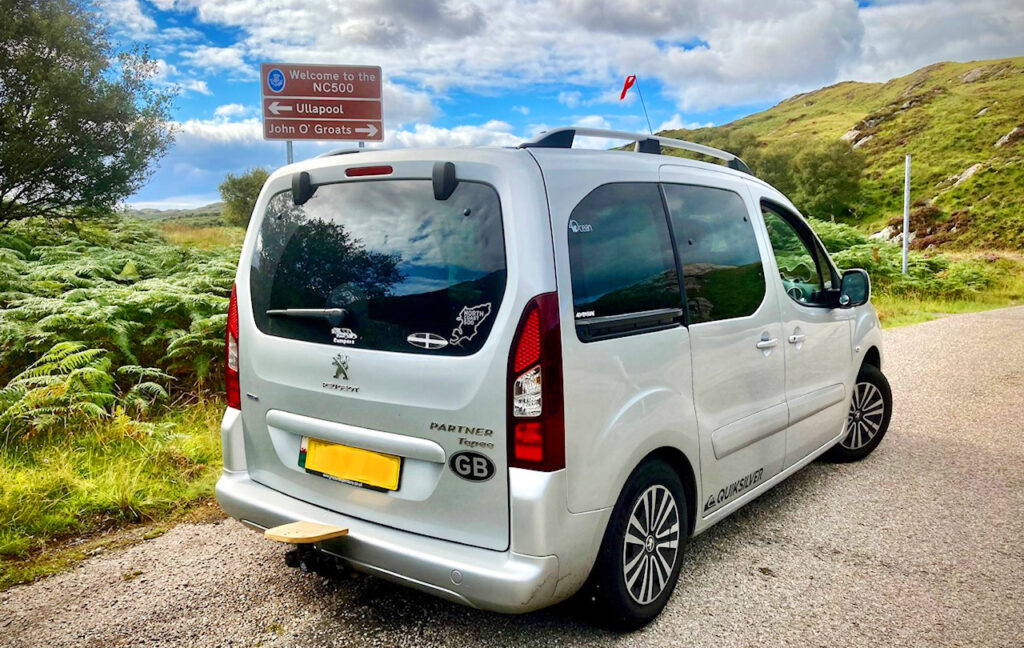
We headed for Kinlochbervie and following our nose, an App and other ‘vans’ we found ourselves parked on flat grass behind the beautiful pebbly Sheigra Beach, where we stayed for two days. Unfortunately, there are now signs saying No Campervans.
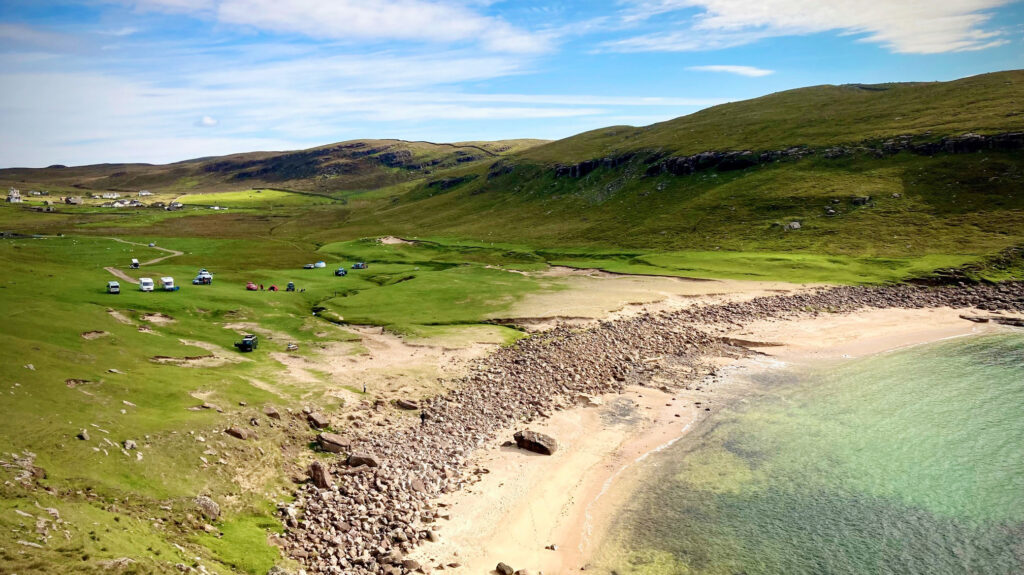
Venturing Westward: Toward the West Coast.
To follow the NC500 Route, unlike us, just after Betty Hill follow the A836 towards Tongue. At Tongue take the A838 and continue west towards Durness, passing the Smoo Cave on the way.
Exploring the Enigmatic Beauty of Smoo Cave in Durness on the NC500

Smoo Cave, nestled in the mesmerizing landscape of Durness on the North Coast 500 (NC500) route, is a captivating natural wonder that lures visitors with its enigmatic charm. This majestic sea cave, formed over thousands of years by the relentless power of the ocean, stands as a testament to the raw forces of nature.
As you approach Smoo Cave, you are greeted by its imposing entrance, a grand archway carved into the cliffs by the ceaseless waves. The cave’s name originates from the Norse word “smjugg” meaning “hiding place,” and once you step inside, you understand why it earned such a mysterious name.
Venturing further into the depths of Smoo Cave, you find yourself immersed in a world of awe-inspiring beauty. The cave is divided into two chambers, each with its own distinct characteristics. The first chamber, illuminated by natural light streaming through the entrance, reveals a breathtaking waterfall cascading from the ceiling. The sound of water crashing against ancient rocks creates a symphony of nature that resonates within you.
As you navigate through the first chamber, you encounter a narrow passageway known as the “Washerwoman’s Cave.” Legend has it that the ghostly apparition of a washerwoman haunts this area, forever doomed to wash her laundry in the underground stream. Whether you believe in such tales or not, the atmosphere is undeniably atmospheric and filled with a sense of intrigue.
Descending deeper into the cave, you enter the second chamber, where the true magnificence of Smoo Cave is unveiled. This vast cavern, shrouded in darkness, is adorned with spectacular stalactites and stalagmites, formed over centuries by the slow drip of mineral-rich water. The silence here is palpable, broken only by the echoing sound of water dripping onto the cave floor.
Durness on the NC500: Things to Do in Durness
Nestled along the North Coast 500 (NC500) route, Durness offers a tapestry of natural wonders and cultural treasures that beckon travellers from far and wide. This remote and picturesque village is a hidden gem, offering a range of things to do in Durness that will leave visitors with unforgettable memories.
Durness is blessed with an abundance of stunning beaches that are sure to captivate nature lovers and beachcombers alike. Experience the raw beauty of Sango Bay, where dramatic cliffs meet the crashing waves of the Atlantic Ocean. The pristine sandy shores and azure waters create an idyllic setting for a leisurely stroll or a refreshing dip in the sea.
For those seeking a glimpse into the past, a visit to the Balnakeil Craft Village is a must. This charming collection of old military buildings has been transformed into a hub for local artisans and craftsmen. Browse through unique galleries and studios, where you can admire and purchase one-of-a-kind creations, from handcrafted jewellery to vibrant paintings.
Outdoor enthusiasts will find themselves in paradise in Durness. Embark on a hiking adventure to Cape Wrath, the most northwesterly point of mainland Britain, where rugged cliffs and sweeping vistas await. The nearby Loch Eriboll provides the perfect backdrop for fishing enthusiasts, with its tranquil waters teeming with fish.
Highland Scenic Drives
Heading South now the A838 run down the Kyle of Durness with spectacular views out across the water. The road is single track but the mountains ahead lure you onwards. For many miles, you are driving over open moorland with mountains on either side and small lochs. At Rhiconich the road widens. At Laxford Bridge the road becomes the A894 towards Scourie.
Kylesku Bridge
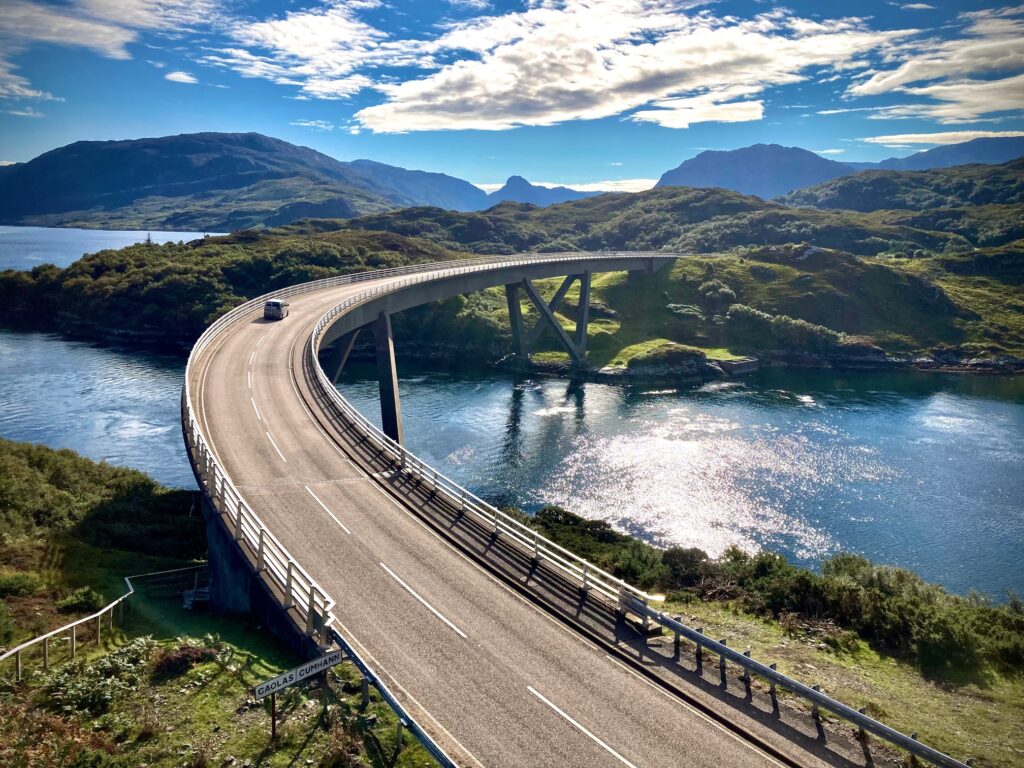
From Scourie the A894 continues south to the Kylesku Bridge, which when we arrived seemed to be hosting a supercar gathering.
Kylesku Bridge is an impressive architectural feat that spans Loch a’ Chàirn Bhàin, connecting the communities of Kylesku and Kylestrome. Its sleek design blends harmoniously with the natural landscape, offering breathtaking views of the surrounding loch and mountains. Beyond its aesthetic allure, the Kylesku Bridge serves a practical purpose, facilitating smoother transportation along the coastal route. It has greatly improved accessibility for both locals and visitors, reducing travel times and enhancing connectivity in this remote region. The bridge has become an integral part of the North Coast 500 (NC500).
The Drumbeg Loop: North Coast 500 (NC500)
‘This road is a snaking span of roads and is without a doubt the best part of The North Coast 500 route.’
Beyond Unapool the road forks. You can’t miss it, as its signposted NC500! This is the Drumbeg Loop and is arguably the most scenic part of the entire NC500 route.
The Drumbeg Loop is a mesmerizing stretch of road nestled along the renowned North Coast 500 route. This scenic route offers a captivating journey, showcasing the breathtaking beauty of the Scottish Highlands. As you traverse the Drumbeg Loop, prepare to be enthralled by the undulating curves that gracefully wind through a tapestry of awe-inspiring landscapes.
With each bend, you’ll be greeted by panoramic vistas that showcase the majesty of towering mountains, serene lochs, cascading waterfalls, and lush green valleys. This captivating scenery is a haven for nature enthusiasts, offering abundant opportunities to witness wildlife in their natural habitat.
A highlight of the Drumbeg Loop is the picturesque village of Drumbeg itself. Nestled amidst this stunning landscape, the village exudes a tranquil charm and provides a perfect respite for travellers. Take a leisurely stroll through its quaint streets and immerse yourself in the warm hospitality of the locals.
To fully experience the Drumbeg Loop, plan your visit during the warmer months when nature blooms in vibrant hues. Embrace the unpredictable weather of the Highlands and let it add an element of adventure to your journey.
Wind your way along the Bealach na Bà, a legendary mountain pass offering jaw-dropping views of the Applecross Peninsula. Immerse yourself in the beauty of nature, spot wildlife along the way, and take in the panoramic vistas that will leave you in awe.
VIII. Exploring the Isle of Skye
Crossing the Skye Bridge, you’ll enter the enchanting Isle of Skye. Explore the otherworldly landscapes and visit famous landmarks such as the Fairy Pools, where crystal-clear waters cascade through a series of natural pools. Hike up to the Old Man of Storr, a towering rock formation that captivates with its grandeur. Experience the
unique charm of Portree, the main town on the Isle of Skye. Wander through its colorful harbor, lined with charming buildings and fishing boats, and indulge in the local hospitality and cuisine.
IX. Coastal Delights: West Coast Highlights
Discover the picturesque villages that dot the west coast of the Scottish Highlands. From the tranquil beauty of Gairloch to the bustling harbor town of Ullapool, each stop along the way offers its own unique charm. Take leisurely coastal walks, breathe in the salty sea air, and sample fresh seafood delights that are sure to tantalize your taste buds. Don’t miss the opportunity to explore the Summer Isles, a group of small islands known for their pristine beaches, wildlife, and breathtaking natural beauty.
X. Lochs and Glens: The Great Glen and Loch Ness
Embark on a journey through the heart of the Scottish Highlands as you drive along the Caledonian Canal and experience the majestic Great Glen. Visit the historic Urquhart Castle, perched on the shores of Loch Ness, and immerse yourself in the legends of the infamous Loch Ness Monster. Take a cruise on the mysterious Loch Ness, marvel at the surrounding mountains, and enjoy the serenity of the Scottish lochs.
XI. Return to Inverness: Highland Farewell
As your anticlockwise adventure comes to a close, make the journey back to Inverness, reflecting on the unforgettable experiences along the NC500 Route. Cherish the memories of breathtaking landscapes, rich cultural encounters, and the warm hospitality of the Scottish Highlands. Take a moment to savor the final views of the rugged terrain and bid farewell to the open road.
XII. Practical Tips and Resources
Ensure a seamless journey along the NC500 Route with practical tips and resources. Discover a range of accommodation options, from cozy B&Bs to luxurious hotels, to suit every traveler’s preference. Indulge in the culinary delights of the Scottish Highlands, from traditional dishes to modern gastronomic experiences. Stay safe on the road with valuable tips on road conditions, weather considerations, and useful resources for planning your trip.
XIII. Conclusion
Recap the unique highlights and experiences of embarking on the anticlockwise NC500 Route. From the historic city of Inverness to the untamed beauty of Caithness, the Isle of Skye, and the scenic west coast, this road trip unveils the extraordinary beauty of the Scottish Highlands. Inspire readers to embark on their own adventure, to witness the breathtaking landscapes, immerse in the rich culture, and create unforgettable memories along the NC500 Route. Let the open road and stunning landscapes of the Scottish Highlands be a beacon of wanderlust and exploration for all who long for adventure.
Take in the Scenery
Last but certainly not least, the NC500 is renowned for its breathtaking scenery. From the rugged coastline to the rolling hills, every inch of the route offers stunning views. Be sure to take your time and enjoy the natural beauty of Scotland at its finest.
In conclusion, the NC500 is a once-in-a-lifetime experience that offers an incredible opportunity to explore Scotland’s natural beauty, rich history, and unique culture. With stunning scenery, delicious food, and a range of unique accommodation options, there’s something for everyone on this unforgettable road trip. So pack your bags, hit the road, and get ready for the adventure of a lifetime.
Diving into the Mystery of Loch Ness
No trip to Scotland would be complete without a visit to Loch Ness, home to the legendary Loch Ness Monster. As you make your way along the NC500 Route, you’ll have the opportunity to unravel the mysteries surrounding this infamous body of water. Take a boat tour, keep an eye out for Nessie, and learn about the intriguing folklore that has captivated visitors for centuries.
Embracing the West Coast’s Untamed Beauty
Continuing your anticlockwise journey, the NC500 Route will guide you along the rugged and untamed beauty of the West Coast. Prepare to be awe-struck by the dramatic cliffs, pristine beaches, and picturesque fishing villages that dot the coastline. Be sure to stop by the charming town of Ullapool, where you can savor freshly caught seafood and experience the warm hospitality of the locals.
Admiring the Isle of Skye’s Fairy-Tale Landscapes
As you venture further along the NC500 Route, you’ll reach the enchanting Isle of Skye. Known for its otherworldly landscapes, this island offers a truly magical experience. Explore the famous Fairy Pools, wander through the dramatic Quiraing, and visit the iconic Old Man of Storr. The Isle of Skye is a photographer’s dream, with its misty mountains, cascading waterfalls, and ancient castles.
FAQs about the NC500 Route, Driven Anticlockwise, East Coast First
1. Is it necessary to drive the NC500 Route anticlockwise with the East Coast as the starting point?
Driving the NC500 Route anticlockwise with the East Coast as the starting point is not necessary but offers a unique perspective. It allows you to gradually immerse yourself in the diverse landscapes of Scotland, from the rugged East Coast to the majestic Highlands and enchanting West Coast.
2. How long does it take to drive the NC500 Route anticlockwise?
The duration of the NC500 Route anticlockwise journey depends on your pace and the number of stops you make along the way. On average, it takes around 5 to 7 days to complete the route comfortably, allowing for ample time to explore the attractions and soak in the beauty of each region.
3. Are there accommodations available along the NC500 Route?
Yes, there are various accommodations available along the NC500 Route, including hotels, bed and breakfasts, campsites, and self-catering accommodations. It’s advisable to book in advance, especially during peak travel seasons, to ensure availability.
4. What is the best time of year to drive the NC500 Route anticlockwise?
The NC500 Route can be driven at any time of year, but the summer months (June to August) offer longer daylight hours also milder weather, making it a popular choice for road trips. However, the route can be equally captivating during spring and autumn, with fewer crowds and a chance to witness Scotland’s changing seasons.
5. Can I rent a car for the NC500 Route journey?
Yes, car rentals are available from various cities in Scotland, including Inverness also Aberdeen, which are convenient starting points for the NC500 Route. It’s recommended to book a rental car in advance to ensure availability and to check if there are any restrictions or requirements for driving in Scotland.
6. Are there any must-visit attractions in addition to the NC500 Route?
Numerous must-visit attractions in addition to the NC500 Route include the historic city of Aberdeen, Cairngorms National Park, Loch Ness, Isle of Skye, and charming villages along the West Coast. Each region has its own unique beauty and cultural highlights, making the entire route an adventure to remember.
7. Are there camping spots along the NC500 route?
Yes, there are many camping spots along the NC500 route. There are designated campsites, also wild camping opportunities, you’ll find options to suit different preferences. Remember, following the Scottish Outdoor Access Code and leaving no trace of your visit is a given.
Conclusion
Embarking on the NC500 Route, driven anticlockwise instead of Clockwise, with the East Coast as the starting point, is a captivating journey that allows you to immerse yourself in Scotland’s breathtaking landscapes and rich history.
From the majestic peaks of Torridon to the mythical Isle of Skye, and the tranquil beauty of Loch Ness, each stop along the way offers its unique charm and allure. So, hit the open road, and get ready to be captivated by the breathtaking landscapes and hidden gems of the NC500 route. Whether you’re a nature lover, history enthusiast, or simply seeking an adventure, the NC500 route must-see stops will leave you in awe.
Decide on What to See
With a diverse range of attractions, you can customize your journey to suit your interests and time constraints. Explore the historic castles, wander along pristine beaches, hike through picturesque mountains, or indulge in delicious local cuisine along the way. The NC500 offers something for everyone, making it a truly unforgettable experience.
Have a Plan, Even if it’s Flexible
To make the most of your NC500 adventure, it’s advisable to plan ahead. Research the must-see stops that align with your interests and create a flexible itinerary that allows for spontaneous discoveries. Booking accommodations in advance, especially during peak travel seasons, ensures a comfortable stay along the route.
Driving The NC500 Route
Whether you choose to embark on the NC500 route in a car, motorhome, or campervan, be prepared for the narrow and winding roads that add to the thrill of the journey. Take your time, drive safely, and make use of passing places to allow other vehicles to pass on single-track roads.
Photo Opportunities
As you travel, keep your camera at the ready to capture the breathtaking vistas, dramatic landscapes, and wildlife encounters. The NC500 is not just a road trip; it’s a visual feast that will provide you with memories and photographs to cherish for a lifetime.
So, gear up for an adventure, immerse yourself in the beauty of the Scottish Highlands, and discover the hidden gems of the NC500 route.

